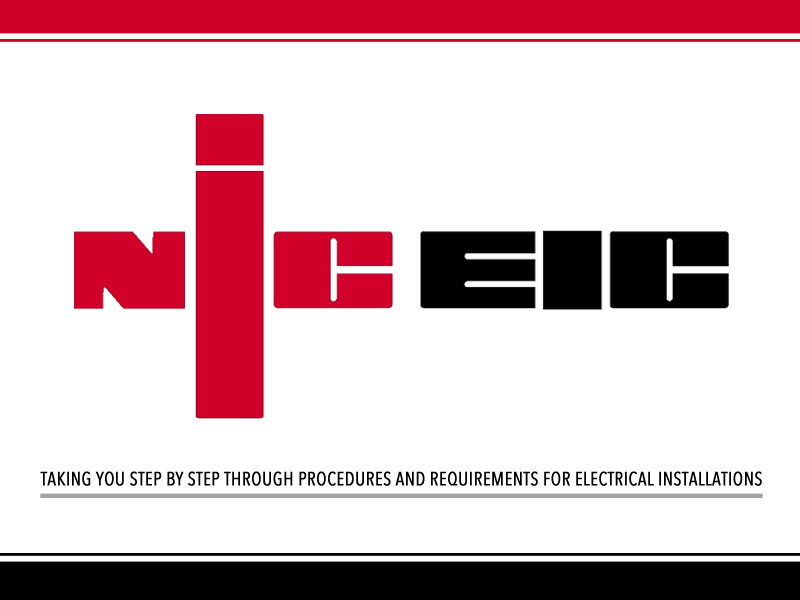
The NICEIC offer their technical support regarding the necessary earthing arrangement to comply with the requirements of BS 7671.
Where an earth electrode provides the means of earthing for an installation, TT earthing arrangement, the resistance to Earth (RA) of the electrode must be measured to verify the earthing arrangement satisfies the requirements of BS 7671 (Regulation 643.7.2).
This article looks at the requirements for providing fault protection for circuits connected to a TT system and using a proprietary earth electrode test instrument to verify the resistance of an earth electrode.
Fault protection for circuits connected to TT systems
BS 7671 recognises the use of an RCD or an overcurrent protective device to provide automatic disconnection of a circuit forming part of a TT system under fault conditions (Regulation 411.5.2 refers). However as an overcurrent device may only be used where a suitably low value of earth fault loop impedance (Zs) is permanently and reliably assured, use of an RCD is preferred. Whilst compliance with BS 7671 will depend on the rating and characteristics of the RCD, in order to achieve disconnection in the shortest possible time the resistance (RA) should be as low as practicable, and as stated in Table 1, a resistance value exceeding 200 Ω may not be stable.
Where an RCD provides earth fault protection, the following conditions must be fulfilled (Regulation 411.5.3):
• The relevant disconnection time of Regulation 411.3.2.2 or 411.3.2.4 should be satisfied, and
• RA x IΔn ≤ 50 V
Where:
RA is the sum of the resistance of the earth electrode and protective conductor connecting it to the exposedconductive- parts (in ohms), and
IΔn is the rated residual operating current of the RCD.
These requirements are met if the Zs of the final circuit protected by the RCD meets the relevant requirements of Table 41.5 of BS 7671, see Table 1.
TABLE 1 Maximum earth fault loop impedance (Zs) for non-delayed and time delayed ‘S’ Type RCDs to BS EN 61008-1 and BS EN 61009-1 for Uo of 230 V
It should be noted that an RCD will provide protection against earth faults but will not detect overloads or short-circuits. Therefore, as stated in ‘Note 2’ of Regulation 411.5.2, where an RCD is used to provide fault protection the circuit must also be provided with overcurrent protection in accordance with Chapter 43 of BS 7671.
Measuring Earth electrode resistance RA
Using a proprietary earth electrode test instrument the Earth electrode resistance test is conducted as follows.
In preparation for the test the installation should be isolated, the earth electrode should preferably be disconnected from the earthing conductor which connects it to the main earthing terminal. If this is not possible, the earthing conductor must be disconnected from the main bonding conductors and other protective conductors at the main earthing terminal, to remove any parallel paths to the general mass of Earth. If such parallel paths are not removed before the measurement is made, an unrealistically low reading of the resistance of the electrode to Earth will be obtained.
With reference to Fig 1, the temporary (current) electrode C2 is placed in the ground some distance away from the installation earth electrode under test. Unless the soil resistivity is very high a distance of around 40 metres is usually sufficient for this purpose. The temporary (potential) electrode P2 is placed approximately mid-way between the other two electrodes.
One reading is taken with P2 in the mid-way position, and a further two readings are taken with P2 approximately 10 % of the overall distance (4 metres) on either side of the mid-way point.
In principle, the instrument passes a current through the ground between the two current terminals C1 and C2. At the same time, the voltage drop between the installation earth electrode and the general mass of earth is determined by means of the voltage (potential difference) at terminals P1 and P2. The instrument then has sufficient information to calculate and display an ohmic value for the resistance of the installation earth electrode under test.
Many proprietary instruments have a facility for checking the resistance of the temporary electrodes. Where the resistance of a temporary electrode is found to exceed the limit stated in the instrument manufacturer’s instructions, the resistance should be reduced to a value within the stated limit.
A sufficient reduction in the resistance of the temporary electrodes may be achieved by driving longer temporary rods into the ground, or by watering the ground in the immediate vicinity of the temporary rods.
The ground adjacent to the earth electrode under test must not be treated with water or brine, as this would make the resistance measurement invalid for the purpose of verification or reporting
Determining the average value
The average of these three resistance readings should then be calculated, as illustrated in the following example, and compared with the individual readings. None of the individual readings should differ from the average by more than 5 %. If they do, and there is a clear progression in the readings from one position of P2 to the next, it may mean that the resistance area of the installation earth electrode is overlapping that of temporary electrode C2. To overcome this problem, electrode C2 should be moved further away from the installation earth electrode, and the test procedure repeated.
Example
When three acceptable resistance readings have been obtained, use these to determine the average value. Suppose that the following readings were obtained when testing the resistance of an earth electrode using an earth electrode test instrument: R1 = 37.3 Ω, R2 = 39.1 Ω and R3 = 41.2 Ω. The mean value is determined as follows:
This measured value should be recorded in the appropriate section of the electrical certificate or report along with the type of electrode and its location.
For more technical advice click here.










